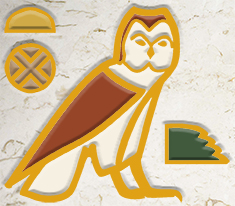
Myths and Legends of Ancient Egypt: The Book of Knowing the Creations of Ra
The Book of Knowing the Creations of Ra is an ancient Egyptian creation myth that narrates the self-creation of Ra, the sun god, and his role in forming the universe. Ra, also known as Khepra (the scarab beetle of creation), describes his emergence during the sp tpy (First Occasion), the moment of creation. He creates his children, Shu (the lower sky/atmosphere) and Tefnut (sky moisture), through self-insemination and spitting them out. Ra’s bA spirit manifests as Heka (magic), the creative force of the universe, which is invoked in rituals but not inherently present in humans.
Ra continues to create primeval beings from the nnw (primeval waters) and plans further creations using his Eye, representing the physical sun. His children form the Great Ennead (nine deities worshipped at Heliopolis), including Geb (earth), Nut (sky), Osiris, Horus, Seth, Isis, and Nephthys, who further populate the world.
The text transitions into the ritual destruction of App (Apophis), a primeval serpent embodying uncreation and chaos (isft), which threatens the cosmic balance (mAat). Seth defeats App nightly, who spears him to protect Ra’s sun boat during its journey through the dwAt (netherworld). App is imprisoned by Akr, a deity of the horizon, and consumed by the Glorious Eye of Ra, which destroys his bA (spirit), Dt (body), Swyt (shadow), and Heka.
The myth emphasizes the constant battle between creation and uncreation, the interconnected spirits (bA, kA, Dt), and the importance of maintaining cosmic balance (mAat). The text is part of the Bremner Rhind Papyrus, dated 312-311 BCE, and includes other rituals and hymns. It reflects the rich mythology and spiritual beliefs of ancient Egypt.



Greetings, it is very interesting that the author of this book: Knowing the Creation of Ra virws it as a myth; rather, than the reality of the Antient people of Kemet at that period in time.
We use the anthropological definition of “myth.”
In anthropology, a myth is a narrative, often with a religious or cultural component, that explains fundamental principles, beliefs, and values within a society. It can be understood as a sacred story that helps to interpret the world and the group’s relationship with it.
Reference
O’Neill, Sean (2018). Myth. obo in Anthropology. doi: 10.1093/obo/9780199766567-0191